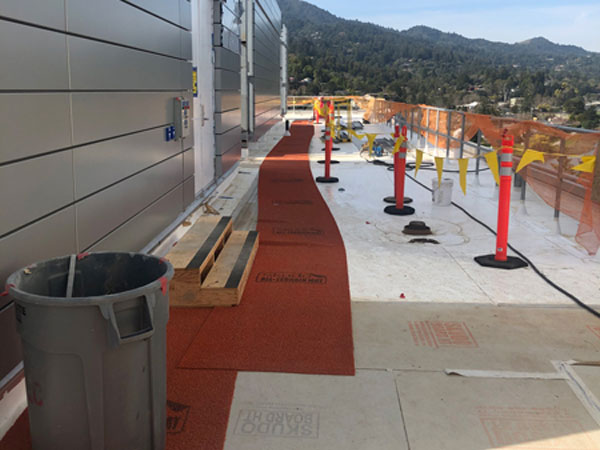When constructing or renovating a building, few elements are as critical as the roof. It shelters your property, improves energy efficiency, and adds to the overall structure’s longevity. Yet, during construction, the roof often faces damage from tools, debris, and weather exposure. Taking proactive steps to ensure roof protection during construction can save you time, money, and potential headaches down the line.
Let’s explore how you can safeguard your roof through every stage of the building process.
Understand Why Roof Protection Matters
The roof is one of the most exposed parts of any structure. During construction, it’s vulnerable to damage from heavy foot traffic, dropped equipment, and harsh weather conditions. Even minor punctures or abrasions can lead to leaks, reduced insulation, and long-term structural issues.
By implementing proper protection methods, you ensure that your investment remains secure and your roofing materials maintain their full lifespan.
Plan for Protection Early
Roof protection should be part of your construction plan from day one. Evaluate how different teams will access the roof, identify high-traffic zones, and determine what type of protection material suits your roofing surface best.
A detailed plan minimizes risks, keeps your project on schedule, and avoids costly rework later. Early preparation also ensures compliance with manufacturer warranties and safety regulations.
Use Temporary Surface Protection
One of the best ways to prevent roof damage is by using temporary protective coverings. These can include reinforced mats, peelable coatings, or non-slip membranes designed to withstand tools, boots, and debris.
Temporary coverings are especially useful for large-scale projects, as they reduce wear and tear while allowing workers to move freely and safely across the surface.
Protect Against Weather Exposure
Unfinished roofs are vulnerable to weather-related damage. Rain, UV rays, and fluctuating temperatures can weaken materials before installation is complete. To prevent this, use waterproof barriers and weather-resistant materials that provide short-term protection without trapping moisture underneath.
This is particularly important during long projects or in regions with unpredictable weather patterns.
Manage Foot Traffic and Equipment Movement
High foot traffic and heavy equipment can be disastrous for a roof under construction. Assign specific pathways for workers and use temporary mats or boards in those areas. Limit access to only essential personnel, and regularly inspect these zones for early signs of wear or damage.
Encouraging disciplined site management not only protects the roof but also enhances overall safety on-site.
Choose Reliable Protection Systems
Modern roofing materials require equally advanced protection systems. Companies like Skudo USA Roofing Solutions offer innovative products designed to shield roof surfaces from physical impact, chemicals, and weather conditions.
Their peelable and slip-resistant protection layers are ideal for construction environments, providing durable, eco-friendly coverage that can be removed cleanly once the job is done.
Investing in professional-grade protection solutions ensures your roof remains pristine from installation to handover.
Avoid Chemical and Stain Damage
Certain construction activities involve adhesives, sealants, or cleaning agents that can harm roofing membranes. Avoid placing these materials directly on the roof surface. If spills occur, clean them immediately using manufacturer-approved methods.
Additionally, applying a protective coating can act as a barrier against chemicals, preventing discoloration or corrosion.
Conduct Regular Inspections
Even with strong protection measures in place, regular inspections are vital. Check for signs of tearing, pooling water, or debris accumulation. Promptly addressing small issues helps prevent more extensive — and expensive — repairs later.
Consistent oversight also ensures that your roof stays within warranty standards and project safety requirements.
Think Long-Term
Roof protection isn’t just about the construction phase — it sets the stage for the roof’s entire service life. Proper care during building helps maintain energy efficiency, prevents leaks, and reduces future maintenance needs.
A well-protected roof means fewer repairs, lower costs, and a stronger, more reliable structure for years to come.
Final Thoughts
During construction, your roof faces countless potential hazards — but with the right preparation and materials, those risks are entirely manageable. Implementing strong protective measures not only preserves your investment but also contributes to a smoother, safer, and more efficient construction process.
For reliable, high-quality solutions for roof protection during construction, visit Skudo USA Roofing Solutions. Their advanced systems help safeguard your project from start to finish, ensuring your roof stays strong and damage-free.
Read more, visit our site.






